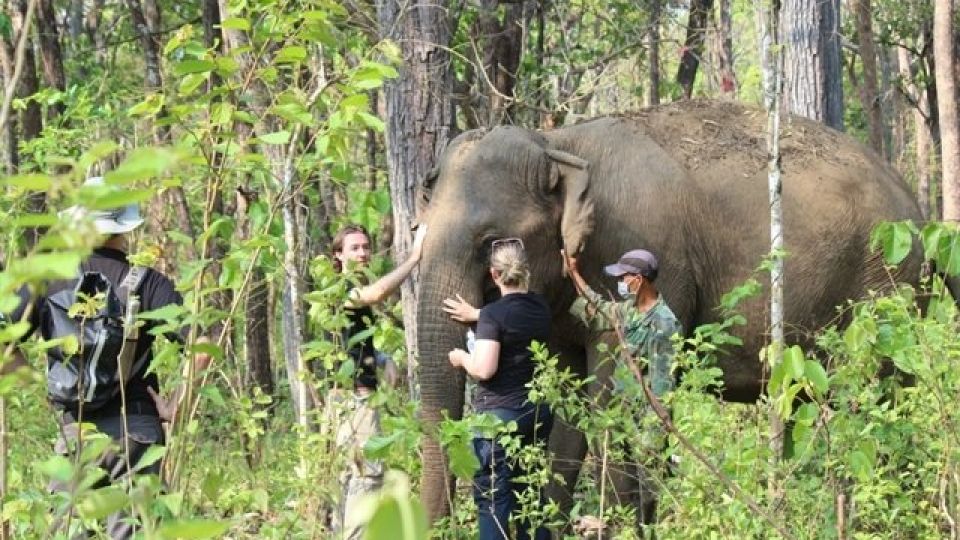February 24, 2025
HANOI – HÀ NỘI The Việt Nam Convention on International Trade in Endangered Species of Wild Fauna and Flora (CITES) Management Authority, in collaboration with WWF-Việt Nam, has launched a campaign to raise awareness about the illegal purchase and trade of ivory products, focused on international tourists.
According to the CITES Elephant Trade Information System (ETIS), Việt Nam has been ranked as the world’s largest hub for ivory seizures since 2018, cementing its status as a critical global transit point.
The total volume of ivory discovered and seized since 2008 is more than 70 tonnes, of which, Việt Nam is considered one of the global ivory transit hotspots.
In early 2023 and 2024, relevant agencies discovered four consecutive cases with more than eight tonnes of ivory seized. These shipments were transited through many countries before being seized.
The deputy director of the CITES Management Authority of Việt Nam, Chu Ngọc Quân, said: “Asian elephants and African elephants have been protected at the highest level of CITES (Appendix I) since the early days of the Convention. In Viet Nam, this species is also included in Group I of the List of endangered, precious and rare forest plants and animals. But this also reflects a reality – elephants are one of the most hunted and killed animals in the world.”
According to WWF-Việt Nam, Southeast Asia and China account for 90 per cent of the global volumes of seized ivory.
Việt Nam plays a pivotal role, responsible for 34 per cent of detected ivory imports and home to the largest ivory seizures in the world.
Much of the ivory carved in Việt Nam is later trafficked to key markets like China and the United States, while some products are sold domestically to locals and international tourists and through online channels.
Tourism is a key sector which can act as a place for the illegal transportation and trade of ivory. Some tourist destinations still display and offer wildlife products, including those made of ivory.
Many tourists mistakenly believe purchasing ivory in Việt Nam is legal. Aiming to directly influence those visitors, businesses in popular destinations have the responsibility to guide and educate to help tourists avoid illegal and harmful activities to nature during their trips.
WWF-Việt Nam, in partnership with the Việt Nam CITES Management Authority and with funding from WWF-US, is launching a communication campaign in four big cities.
The campaign’s key visuals and message were developed with a focus on the illegality of ivory use and trade.
Images and posters will be displayed at four international airports in Việt Nam where many tourists pass through, and in four major tourist cities – Hà Nội, HCM City, Nha Trang and Đà Nẵng.
Quân said: “With the strong recovery of tourism after the COVID-19 pandemic, wider communication methods need to be applied to easily reach international tourists and prevent the purchase and sale of ivory products in Việt Nam.”
WWF-Việt Nam’s chief conservation officer, Thibault Ledecq, said the campaign aims not only to raise awareness of the harmful effects of the illegal ivory trade, but also to advocate for joint efforts to protect wildlife.
“We will organise communication activities, workshops and community events to educate, warn about the consequences of using ivory, as well as encourage community action in protecting elephants in Việt Nam and outside Việt Nam,” he said.


